Summer travel: 26 things to do in Switzerland’s 26 cantons

From Aargau to Zurich, we take a whistle-stop trip around the highlights for Switzerland's 26 cantons vising castles, lakes and mountains along the way.
Aargau: Lenzberg Castle
.jpg) Lenzburg Castle. File photo: Depositphotos
With a history dating back a thousand years, Aargau’s Lenzberg Castle is well worth a visit. Also known as the Dragon Castle, this 'Schloss' comes complete with its own dragon’s lair, a drawbridge, a knight’s hall and picnic-worthy gardens. A great day-trip, with a fantastic kids’ playroom where you can dress up as knights, ladies and dragons too, of course!
Appenzell Ausserrhoden: Säntis
Lenzburg Castle. File photo: Depositphotos
With a history dating back a thousand years, Aargau’s Lenzberg Castle is well worth a visit. Also known as the Dragon Castle, this 'Schloss' comes complete with its own dragon’s lair, a drawbridge, a knight’s hall and picnic-worthy gardens. A great day-trip, with a fantastic kids’ playroom where you can dress up as knights, ladies and dragons too, of course!
Appenzell Ausserrhoden: Säntis
.jpg) Idyllic Apenzell with the Säntis in the background. Image: Depositphotos
The small half-cantons of Appenzell Ausserrhoden (traditionally Catholic) and Innerrhoden (traditionally Protestant) make up the picturesque region of Appenzellerland.
When visiting Ausserrhoden, you can’t go past (literally) its resident mountain, Säntis. An impressive peak reaching to 2,501m, Santis is the tallest mountain in the Alpstein massif. Catch a cable car (or hike) to the top and gaze out over neighbouring cantons Appenzell Innerrhoden and St Gallen or over Lake Constance.
Idyllic Apenzell with the Säntis in the background. Image: Depositphotos
The small half-cantons of Appenzell Ausserrhoden (traditionally Catholic) and Innerrhoden (traditionally Protestant) make up the picturesque region of Appenzellerland.
When visiting Ausserrhoden, you can’t go past (literally) its resident mountain, Säntis. An impressive peak reaching to 2,501m, Santis is the tallest mountain in the Alpstein massif. Catch a cable car (or hike) to the top and gaze out over neighbouring cantons Appenzell Innerrhoden and St Gallen or over Lake Constance.
.jpg) Boys from Appenzell in traditional costumes. Photo: AFP
It is said that on a clear day that you can see six countries from the top of the Säntis: Switzerland, Germany, Austria, France, Lichtenstein and Italy.
Plan B: Appenzell cheese factory
Sample one of Appenzellerland’s most famous local products with a trip to the Appenzell cheese factory and museum.
Appenzell Innerrhoden: Berggasthaus Aescher
Boys from Appenzell in traditional costumes. Photo: AFP
It is said that on a clear day that you can see six countries from the top of the Säntis: Switzerland, Germany, Austria, France, Lichtenstein and Italy.
Plan B: Appenzell cheese factory
Sample one of Appenzellerland’s most famous local products with a trip to the Appenzell cheese factory and museum.
Appenzell Innerrhoden: Berggasthaus Aescher
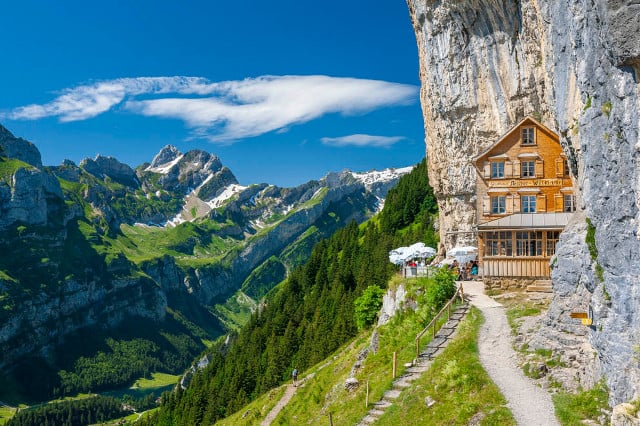 Photo: Aescher Alpstein
An Instagram staple, Berggasthaus Aescher gives new meaning to the term “destination restaurant” – even when that is not always positive news.
Located a cable-car ride and short hike from Wasserauen, Aescher is built right into the cliff face and clings dazzlingly to the side of the Ebenalp mountain (if you go inside, you’ll see the back wall of the hotel is actually living rock). It's open May to November.
Basel-Landschaft: Augusta Rurica
Photo: Aescher Alpstein
An Instagram staple, Berggasthaus Aescher gives new meaning to the term “destination restaurant” – even when that is not always positive news.
Located a cable-car ride and short hike from Wasserauen, Aescher is built right into the cliff face and clings dazzlingly to the side of the Ebenalp mountain (if you go inside, you’ll see the back wall of the hotel is actually living rock). It's open May to November.
Basel-Landschaft: Augusta Rurica
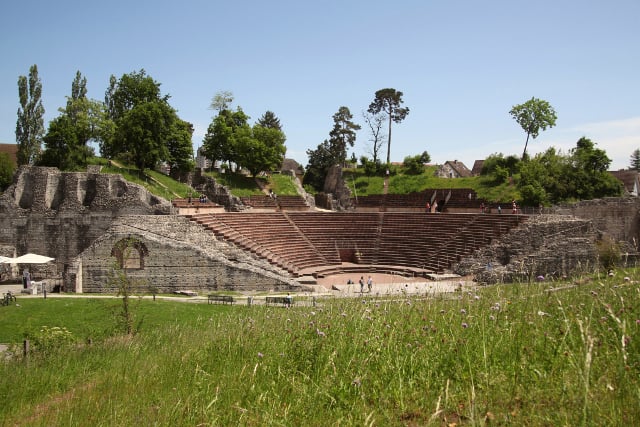 Photo: Suzanne Schenker
Soak up some of this canton’s ancient Roman history at Augusta Rurica, Switzerland’s largest archaeological park. The ruins from some of the earliest Roman settlements along the Rhine river include an amphitheatre, a castle and aqueduct. There’s also a museum containing the treasure of Kaiseraugst, one of the largest hoards of Roman silver ever discovered.
Basel-Stadt: Fondation Beyeler
Photo: Suzanne Schenker
Soak up some of this canton’s ancient Roman history at Augusta Rurica, Switzerland’s largest archaeological park. The ruins from some of the earliest Roman settlements along the Rhine river include an amphitheatre, a castle and aqueduct. There’s also a museum containing the treasure of Kaiseraugst, one of the largest hoards of Roman silver ever discovered.
Basel-Stadt: Fondation Beyeler
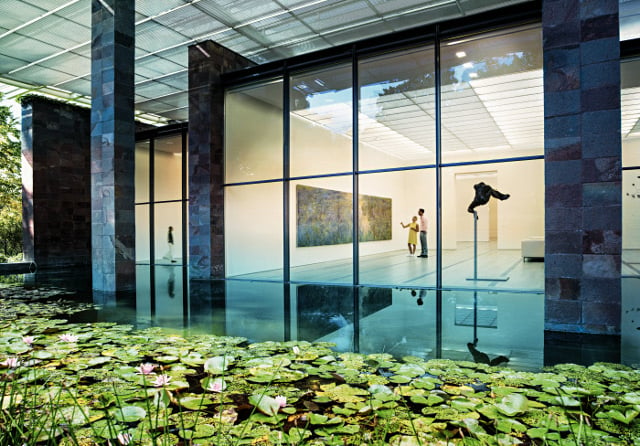 Photo: Stephan Schacher/Fondation Beyeler
Switzerland’s self-styled capital of culture hosts the famous international art fair Art Basel annually in June. However, if you can’t be there for those four days, do not despair! The city offers a wealth of high-profile art year-round.
Check out Fondation Beyeler, with its impressive exhibition schedule of classic modern and contemporary artists, and the permanent collection including Monet, Kandinsky, Picasso, Warhol, Matisse and Rothko. This year's summer exhibition is given over to contemporary painter Rudolf Stingel including works that has never before been shown.
Bern: the Old Town
Photo: Stephan Schacher/Fondation Beyeler
Switzerland’s self-styled capital of culture hosts the famous international art fair Art Basel annually in June. However, if you can’t be there for those four days, do not despair! The city offers a wealth of high-profile art year-round.
Check out Fondation Beyeler, with its impressive exhibition schedule of classic modern and contemporary artists, and the permanent collection including Monet, Kandinsky, Picasso, Warhol, Matisse and Rothko. This year's summer exhibition is given over to contemporary painter Rudolf Stingel including works that has never before been shown.
Bern: the Old Town
.jpg) Bern's historic old town. File photo: Depositphotos
The Swiss capital city’s Old Town (Altstadt) was declared a Unesco World Heritage site in 1983 and it’s easy to see why. The charming medieval streets and well-preserved renaissance buildings are dramatically situated on and above the steep banks of the River Aare, which is where the city's residents go to cool off on hot summer afternoons.
Plan B: The Bernese Oberland
It's less of a plan B and more of a must-do-as-well. The countryside around Bern has some world-class scenery. Check out the pretty, car-free town of Wengen with views to the 'big three' mountains: Eiger, Mönch and Jungfrau or swim in the turquoise waters of Lake Thun and Lake Brienz.
Fribourg: Gruyères
Bern's historic old town. File photo: Depositphotos
The Swiss capital city’s Old Town (Altstadt) was declared a Unesco World Heritage site in 1983 and it’s easy to see why. The charming medieval streets and well-preserved renaissance buildings are dramatically situated on and above the steep banks of the River Aare, which is where the city's residents go to cool off on hot summer afternoons.
Plan B: The Bernese Oberland
It's less of a plan B and more of a must-do-as-well. The countryside around Bern has some world-class scenery. Check out the pretty, car-free town of Wengen with views to the 'big three' mountains: Eiger, Mönch and Jungfrau or swim in the turquoise waters of Lake Thun and Lake Brienz.
Fribourg: Gruyères
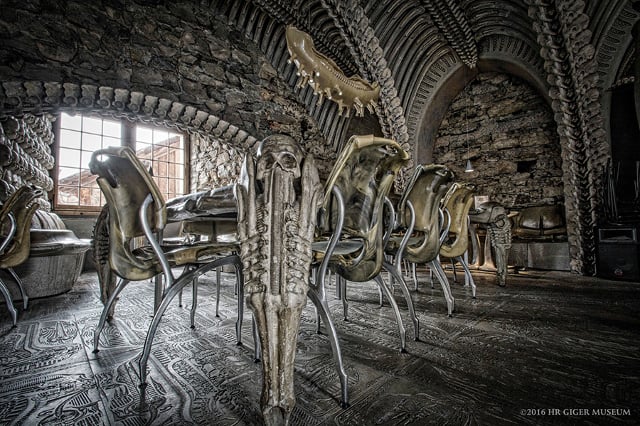 The fantastical bar at the Giger Museum. Photo: HR Giger Museum
The historic walled town of Gruyères offers many delights, from its famous cheese (honoured in the Maison du Gruyère where you can see it being made) to visiting the museum devoted to Swiss artist HR Giger.
This museum is home to the largest collection of the Alien designer’s dark, organic sci-fi sculptures, paintings, furniture and film designs.
Plan B: Frog Museum
Another medieval town in canton Fribourg contains possibly the strangest museum in Switzerland. The Frog Museum in Estavayer-le-Lac features 108 stuffed frogs arranged in scenes from everyday life in the mid-19th century, thought to have been the taxidermy project of a former Swiss Guard.
Geneva: the Jet d’Eau
The fantastical bar at the Giger Museum. Photo: HR Giger Museum
The historic walled town of Gruyères offers many delights, from its famous cheese (honoured in the Maison du Gruyère where you can see it being made) to visiting the museum devoted to Swiss artist HR Giger.
This museum is home to the largest collection of the Alien designer’s dark, organic sci-fi sculptures, paintings, furniture and film designs.
Plan B: Frog Museum
Another medieval town in canton Fribourg contains possibly the strangest museum in Switzerland. The Frog Museum in Estavayer-le-Lac features 108 stuffed frogs arranged in scenes from everyday life in the mid-19th century, thought to have been the taxidermy project of a former Swiss Guard.
Geneva: the Jet d’Eau
.jpg) Photo: Olivier Miche/Geneva Tourism
You can’t visit Geneva without checking out the Jet d’Eau waterspout. Built in 1886 to regulate the water pressure, it’s one of the world’s tallest fountains, reaching 140m at its highest spray. It spurts into Geneva harbour in front of Quai Gustave-Ador but you’ll get the best pics from the other side, near the Bains des Pâquis.
Plan B: CERN
Science buffs won’t want to miss checking out the famous European Organization for Nuclear Research (CERN) while in Geneva. If you want to do a guided tour, book early as the English-language ones are highly sought-after.
Glarus: Klontalersee
Photo: Olivier Miche/Geneva Tourism
You can’t visit Geneva without checking out the Jet d’Eau waterspout. Built in 1886 to regulate the water pressure, it’s one of the world’s tallest fountains, reaching 140m at its highest spray. It spurts into Geneva harbour in front of Quai Gustave-Ador but you’ll get the best pics from the other side, near the Bains des Pâquis.
Plan B: CERN
Science buffs won’t want to miss checking out the famous European Organization for Nuclear Research (CERN) while in Geneva. If you want to do a guided tour, book early as the English-language ones are highly sought-after.
Glarus: Klontalersee
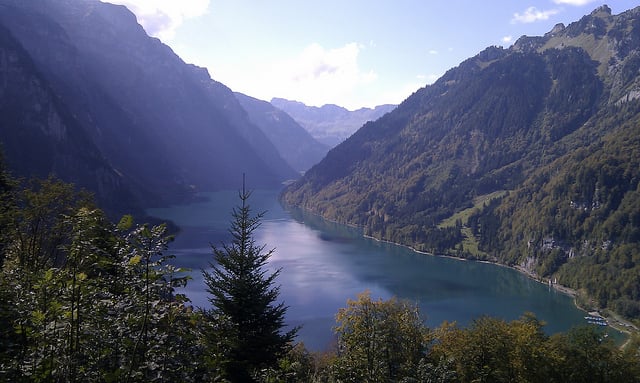 Photo: Bob Ryskamp
Nice things come in small packages. Switzerland’s smallest canton offers the gem of the Klontalersee – a pretty mountain lake with amazing reflections. Walk around the shores, taking snaps, or take a boat tour. You can even swim here in summer, when the water temperature reaches around 20C.
Graubünden: Swiss National Park
Photo: Bob Ryskamp
Nice things come in small packages. Switzerland’s smallest canton offers the gem of the Klontalersee – a pretty mountain lake with amazing reflections. Walk around the shores, taking snaps, or take a boat tour. You can even swim here in summer, when the water temperature reaches around 20C.
Graubünden: Swiss National Park
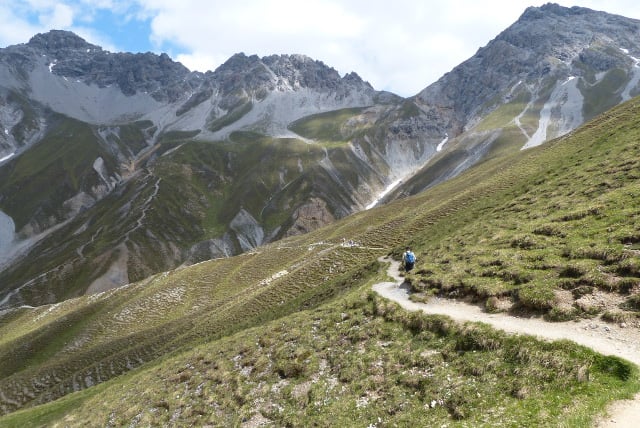 Photo: Caroline Bishop
In a country known for its natural beauty, it may surprise you to learn Switzerland only has one national park. But because it’s Switzerland, it’s a pretty spectacular one. Covering an area of 170 kilometres square in the wild and wonderful southeastern canton of Graubünden, this is a unique area of the Alps stocked full of flora and fauna.
Plan B: Soglio
The traditional alpine hamlets of Graubünden are always winning ‘most picturesque village in the world’ awards, so stop in and visit one while you’re here: try tiny Soglio (pop: 167).
Jura: St Ursanne
Photo: Caroline Bishop
In a country known for its natural beauty, it may surprise you to learn Switzerland only has one national park. But because it’s Switzerland, it’s a pretty spectacular one. Covering an area of 170 kilometres square in the wild and wonderful southeastern canton of Graubünden, this is a unique area of the Alps stocked full of flora and fauna.
Plan B: Soglio
The traditional alpine hamlets of Graubünden are always winning ‘most picturesque village in the world’ awards, so stop in and visit one while you’re here: try tiny Soglio (pop: 167).
Jura: St Ursanne
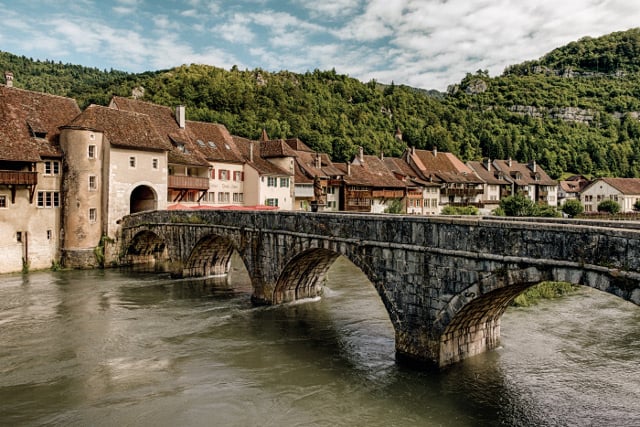 Photo: Ivo Scholz/Swiss Tourism
On the other side of Switzerland, Jura offers up the gorgeous town of St Ursanne on the banks of the fast-flowing river Doubs. The town revolves around its handsome Collegiate Church and former monastery and still retains a peaceful, reflective feel.
Plan B: Jurassic Jura
Those who want to put the Jurassic in Jura can explore the canton’s fantastic ‘Tracking the Giants’ dinosaur trail, where you’ll see fossil footprints and other relics of the area’s former prehistoric inhabitants.
Lucerne: Chapel Bridge
Photo: Ivo Scholz/Swiss Tourism
On the other side of Switzerland, Jura offers up the gorgeous town of St Ursanne on the banks of the fast-flowing river Doubs. The town revolves around its handsome Collegiate Church and former monastery and still retains a peaceful, reflective feel.
Plan B: Jurassic Jura
Those who want to put the Jurassic in Jura can explore the canton’s fantastic ‘Tracking the Giants’ dinosaur trail, where you’ll see fossil footprints and other relics of the area’s former prehistoric inhabitants.
Lucerne: Chapel Bridge
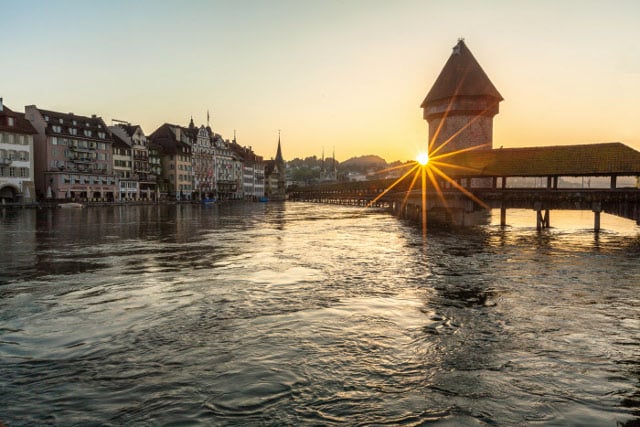 Photo: Jan Geerk/Swiss Tourism
Lucerne (Luzern in German) is a must-see on any tourist’s list. The old town is stunningly situated on the banks of Lake Lucerne, over the waters of which stands the famous Kapellbrücke – a 14th-century covered wooden bridge featuring 17th century painted scenes of local history and the city’s patron saints. It was rebuilt in 1993 after a devastating fire which destroyed many of the original paintings.
Neuchâtel: Absinthe Museum
Photo: Jan Geerk/Swiss Tourism
Lucerne (Luzern in German) is a must-see on any tourist’s list. The old town is stunningly situated on the banks of Lake Lucerne, over the waters of which stands the famous Kapellbrücke – a 14th-century covered wooden bridge featuring 17th century painted scenes of local history and the city’s patron saints. It was rebuilt in 1993 after a devastating fire which destroyed many of the original paintings.
Neuchâtel: Absinthe Museum
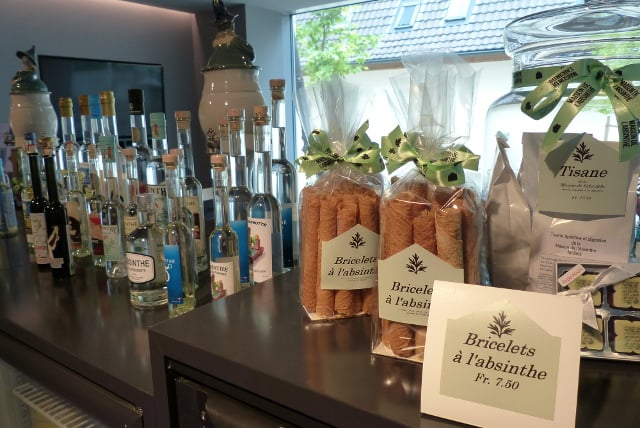 Photo: Caroline Bishop
The wormwood-infused "green fairy" drink beloved of Toulouse-Lautrec and co. in Paris during the Belle Époque was first concocted in Neuchâtel’s Val-de-Travers in the late 1700s.
Read also: What a trip - 10 great Swiss inventions
Nowadays you can walk or cycle a 35km Absinthe Trail linking distilleries, restaurants and shops selling the stuff, and visit the fascinating Maison de l’Absinthe (Absinthe Museum) in Motiers. But be warned, you may start seeing double if you imbibe too much on the way!
Nidwalden: Stanserhorn’s open-air cable car
Photo: Caroline Bishop
The wormwood-infused "green fairy" drink beloved of Toulouse-Lautrec and co. in Paris during the Belle Époque was first concocted in Neuchâtel’s Val-de-Travers in the late 1700s.
Read also: What a trip - 10 great Swiss inventions
Nowadays you can walk or cycle a 35km Absinthe Trail linking distilleries, restaurants and shops selling the stuff, and visit the fascinating Maison de l’Absinthe (Absinthe Museum) in Motiers. But be warned, you may start seeing double if you imbibe too much on the way!
Nidwalden: Stanserhorn’s open-air cable car
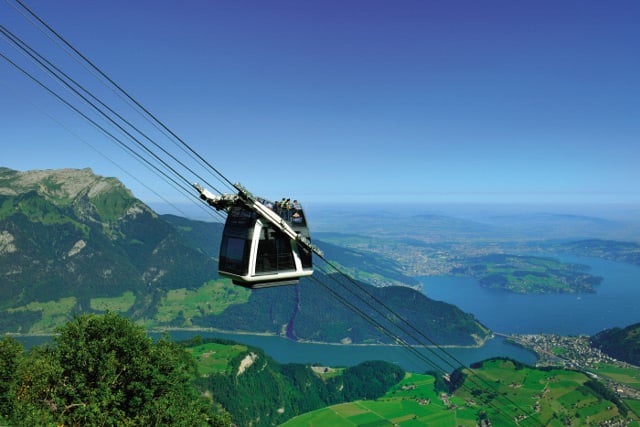 Photo: Christian Perret/Swiss Tourism
Switzerland has some excellent cable cars, funiculars and cog-wheel railways with almost-unfailingly jaw-dropping ascents and nerve-inducing views. However, Nidwalden’s Stanserhorn CabriO has a little extra claim to fame – it’s the world’s first open-top, double-decker cable car (not for the faint of heart).
Enjoy brilliant 360 degree views from the top deck as you travel up the Stanserhorn mountain, plus the added thrill of feeling the wind in your hair.
Obwalden: Pilatus
Photo: Christian Perret/Swiss Tourism
Switzerland has some excellent cable cars, funiculars and cog-wheel railways with almost-unfailingly jaw-dropping ascents and nerve-inducing views. However, Nidwalden’s Stanserhorn CabriO has a little extra claim to fame – it’s the world’s first open-top, double-decker cable car (not for the faint of heart).
Enjoy brilliant 360 degree views from the top deck as you travel up the Stanserhorn mountain, plus the added thrill of feeling the wind in your hair.
Obwalden: Pilatus
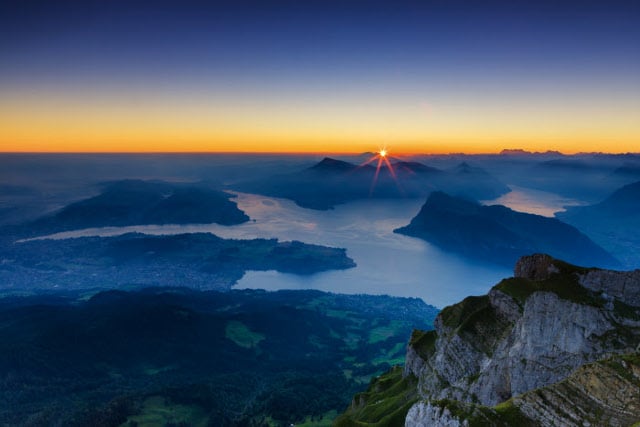 Photo: Andreas Gerth/Swiss Tourism
Another record-breaking mountain ride is located in Obwalden. The astounding feat of engineering that is the Pilatusbahn winds its way up the side of Mount Pilatus and is the world’s steepest cog railway. Once you’re at the 2,132m station of Pilatus Kulm, you’ll enjoy wonderful views over Lake Lucerne and beyond.
Schaffhausen: Rheinfalls
Photo: Andreas Gerth/Swiss Tourism
Another record-breaking mountain ride is located in Obwalden. The astounding feat of engineering that is the Pilatusbahn winds its way up the side of Mount Pilatus and is the world’s steepest cog railway. Once you’re at the 2,132m station of Pilatus Kulm, you’ll enjoy wonderful views over Lake Lucerne and beyond.
Schaffhausen: Rheinfalls
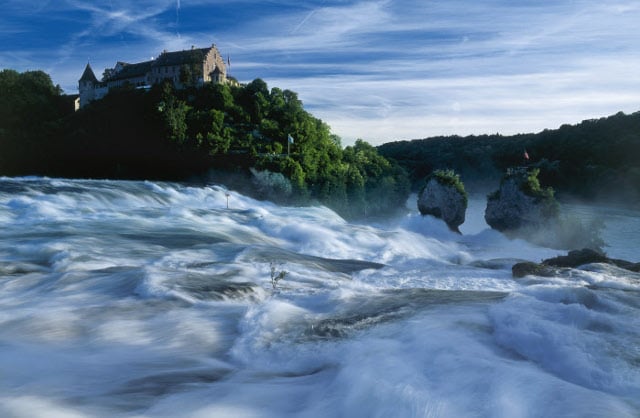 Photo: Christof Sonderegger/Swiss Tourism
Getting sick of huge mountains and picturesque towns? In Schaffhausen the main attraction is the impressive Rheinfalls. Europe’s answer to Niagara, the sheer volume of Rhine River water pounding over these waterfalls is a sight to see – especially in spring and early summer as the mountain snow melts away.
Plan B: Stein Am Rhein
Just in case you were after another lovely town – Stein Am Rhein is a beautiful example, full of half-timbered, brightly painted medieval buildings.
Schwyz: Einsiedeln Abbey
Photo: Christof Sonderegger/Swiss Tourism
Getting sick of huge mountains and picturesque towns? In Schaffhausen the main attraction is the impressive Rheinfalls. Europe’s answer to Niagara, the sheer volume of Rhine River water pounding over these waterfalls is a sight to see – especially in spring and early summer as the mountain snow melts away.
Plan B: Stein Am Rhein
Just in case you were after another lovely town – Stein Am Rhein is a beautiful example, full of half-timbered, brightly painted medieval buildings.
Schwyz: Einsiedeln Abbey
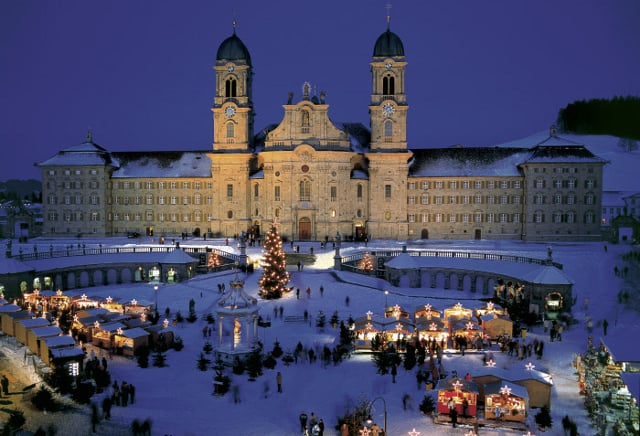 Photo: Christof Sonderegger/Swiss Tourism
The town of Einsiedeln in the canton of Schwyz is watched over by the large, baroque-style Einsiedeln Abbey and church.
This still-active Benedictine monastery was first established around 1,000 years ago and has been a popular resting spot on the 'Way of St James' pilgrimage route for much of that time. Lovely at any time of year, the Abbey is especially magical at Christmas when there’s a large market chock full of food, gifts and Glühwein (or mulled wine).
Solothurn: Solothurn old town
Photo: Christof Sonderegger/Swiss Tourism
The town of Einsiedeln in the canton of Schwyz is watched over by the large, baroque-style Einsiedeln Abbey and church.
This still-active Benedictine monastery was first established around 1,000 years ago and has been a popular resting spot on the 'Way of St James' pilgrimage route for much of that time. Lovely at any time of year, the Abbey is especially magical at Christmas when there’s a large market chock full of food, gifts and Glühwein (or mulled wine).
Solothurn: Solothurn old town
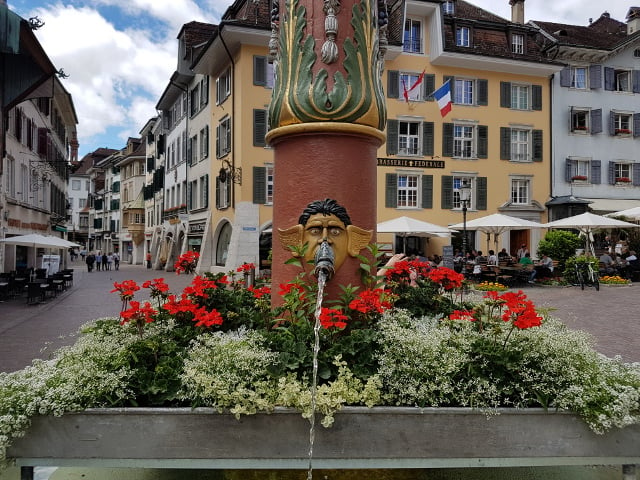 Photo: Claire Doble
Solothurn, something of a cultural hub with its literature and film festivals, is billed as Switzerland’s finest baroque town. The capital of the canton of the same name, the town centre is a beautifully maintained time capsule from the 17th century.
Take a tour to discover how Solothurn is centred around the mystical number 11, with 11 fountains, 11 abbeys and churches, and even a clock face with just 11 numbers on it.
St. Gallen: Stiftsbibliothek Library
Photo: Claire Doble
Solothurn, something of a cultural hub with its literature and film festivals, is billed as Switzerland’s finest baroque town. The capital of the canton of the same name, the town centre is a beautifully maintained time capsule from the 17th century.
Take a tour to discover how Solothurn is centred around the mystical number 11, with 11 fountains, 11 abbeys and churches, and even a clock face with just 11 numbers on it.
St. Gallen: Stiftsbibliothek Library
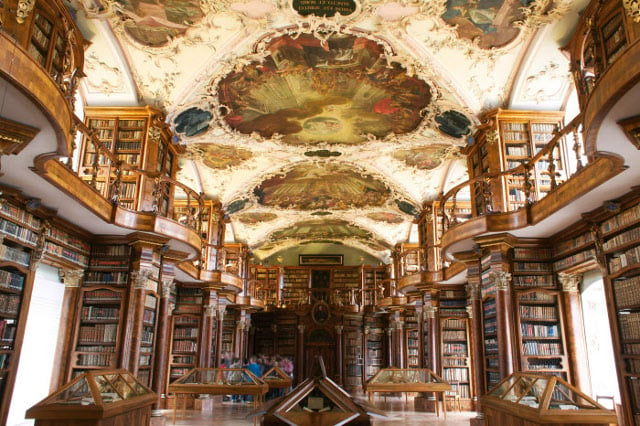 Photo: Christof Schuerpf/Swiss Tourism
The entire St Gallen Abbey precinct is Unesco-listed, but the medieval jewel in the crown is the Abbey’s Stiftsbibliothek (library). This opulent wood-panelled space is one of the oldest libraries in the world still in operation. It contains a treasure trove of rare and ancient manuscripts including some of Charlemagne’s correspondence and priceless illuminated manuscripts dating from the early middle ages onward.
Plan B: Mogelsberg treetop walk
This beautiful new walkway not far from the city of St Gallen rises up to 50 metres off the forest floor and allows people to experience the flora and fauna in a whole new way. Pram-friendly, it offers views over the Necker Valley and even as far off as the dramatic Churfirsten mountain range and the Appenzellerland region.
Read also: In pics - Switzerland's 11 stunning Unesco World Heritage sites
Thurgau: Sugar Mill tour
Sugar is big business in Switzerland and, given the amount of chocolate produced and consumed here, that probably won’t shock you. In the largely agricultural canton of Thurgau (it is famous for its apples and apple cider), you can get stuck into the nitty gritty of Swiss sugar production by taking a tour of one of the country’s main sugar mills in the cantonal capital city, Frauenfeld.
Plan B: The Hüttwilersee
This small tranquil lake is a hidden gem for hiking around or even diving into during the warmer months.
Ticino: Bellinzona’s castles
Photo: Christof Schuerpf/Swiss Tourism
The entire St Gallen Abbey precinct is Unesco-listed, but the medieval jewel in the crown is the Abbey’s Stiftsbibliothek (library). This opulent wood-panelled space is one of the oldest libraries in the world still in operation. It contains a treasure trove of rare and ancient manuscripts including some of Charlemagne’s correspondence and priceless illuminated manuscripts dating from the early middle ages onward.
Plan B: Mogelsberg treetop walk
This beautiful new walkway not far from the city of St Gallen rises up to 50 metres off the forest floor and allows people to experience the flora and fauna in a whole new way. Pram-friendly, it offers views over the Necker Valley and even as far off as the dramatic Churfirsten mountain range and the Appenzellerland region.
Read also: In pics - Switzerland's 11 stunning Unesco World Heritage sites
Thurgau: Sugar Mill tour
Sugar is big business in Switzerland and, given the amount of chocolate produced and consumed here, that probably won’t shock you. In the largely agricultural canton of Thurgau (it is famous for its apples and apple cider), you can get stuck into the nitty gritty of Swiss sugar production by taking a tour of one of the country’s main sugar mills in the cantonal capital city, Frauenfeld.
Plan B: The Hüttwilersee
This small tranquil lake is a hidden gem for hiking around or even diving into during the warmer months.
Ticino: Bellinzona’s castles
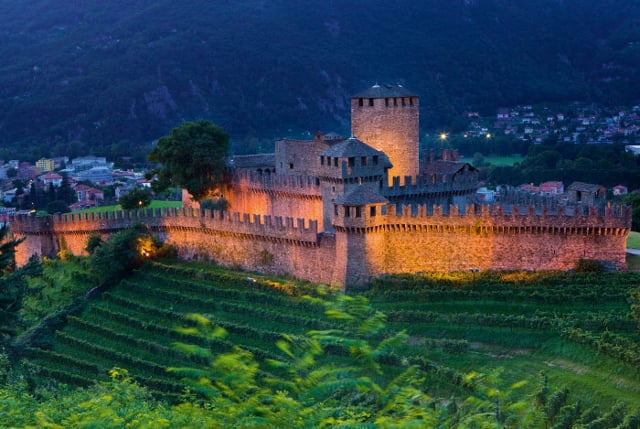 Photo: Roland Gerth/Swiss Tourism
If you want sunshine, Switzerland's Italian-speaking canton of Ticino is a good bet. And a good place to start is the town of Bellinzona which is home to not one but three atmospheric ruined castles. These are Unesco-listed and offer a fine day’s exploration as well as some stunning views from the ancient ramparts.
Plan B: Lavertezzo bridge
The Lavertezzo bridge in Ticino’s stunning Verzasca Valley is a medieval, double-curved bridge that arcs over the pristine bottle-green water of the Verzasca river and is another postcard-perfect spot.
Uri: Rütli meadow
Photo: Roland Gerth/Swiss Tourism
If you want sunshine, Switzerland's Italian-speaking canton of Ticino is a good bet. And a good place to start is the town of Bellinzona which is home to not one but three atmospheric ruined castles. These are Unesco-listed and offer a fine day’s exploration as well as some stunning views from the ancient ramparts.
Plan B: Lavertezzo bridge
The Lavertezzo bridge in Ticino’s stunning Verzasca Valley is a medieval, double-curved bridge that arcs over the pristine bottle-green water of the Verzasca river and is another postcard-perfect spot.
Uri: Rütli meadow
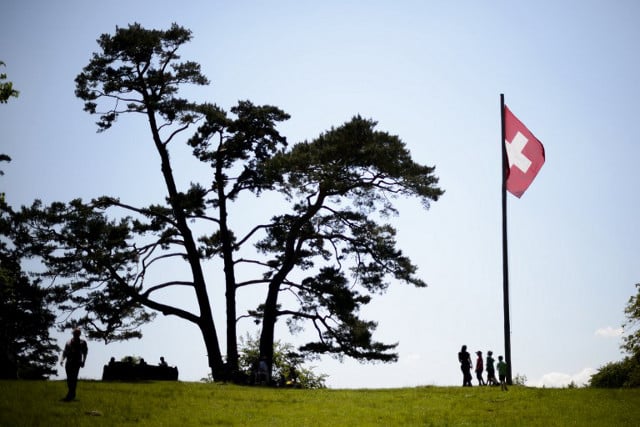 Photo: Fabrice Coffrini/AFP
Uri is famous for not one but two Swiss 'origin stories'. It is where the arguably mythical character of William Tell lived and shot the arrow off his son’s head (there’s a bronze statue of him in Altdorf), and it’s also where you’ll find the Rütli meadow, where the oath of the Swiss Confederation was first sworn back in 1291 – at least according to the popular version.
A visit to Rütli is something akin to visiting the UK’s Runnymede or Independence Hall in the US. The spectacular boat ride across Lake Lucerne to the meadow is an experience in itself.
Valais: The Matterhorn
Photo: Fabrice Coffrini/AFP
Uri is famous for not one but two Swiss 'origin stories'. It is where the arguably mythical character of William Tell lived and shot the arrow off his son’s head (there’s a bronze statue of him in Altdorf), and it’s also where you’ll find the Rütli meadow, where the oath of the Swiss Confederation was first sworn back in 1291 – at least according to the popular version.
A visit to Rütli is something akin to visiting the UK’s Runnymede or Independence Hall in the US. The spectacular boat ride across Lake Lucerne to the meadow is an experience in itself.
Valais: The Matterhorn
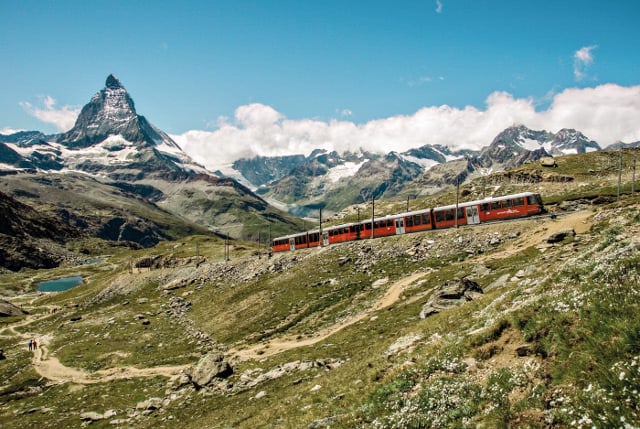 Photo: Toni Mohr/Swiss Tourism
It’s all about altitude in Valais. The canton is home to the stunning, instantly recognizable Matterhorn mountain, as well as around 45 other peaks that rise over 4,000 metres above sea level including Switzerland’s highest, Dufourspitze at 4,634m.
Vaud: Vevey
Photo: Toni Mohr/Swiss Tourism
It’s all about altitude in Valais. The canton is home to the stunning, instantly recognizable Matterhorn mountain, as well as around 45 other peaks that rise over 4,000 metres above sea level including Switzerland’s highest, Dufourspitze at 4,634m.
Vaud: Vevey
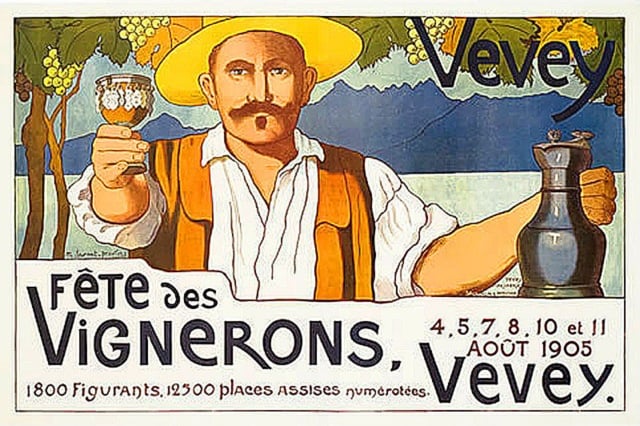 The elegant town of Vevey is very much on the international travel radar in 2019 with both Lonely Planet and National Geographic putting on its 'must-see' lists for this year.
The reason is the upcoming Fête des Vignerons (Winegrowers' Festival), which runs from July 18th to August 11th.
The elegant town of Vevey is very much on the international travel radar in 2019 with both Lonely Planet and National Geographic putting on its 'must-see' lists for this year.
The reason is the upcoming Fête des Vignerons (Winegrowers' Festival), which runs from July 18th to August 11th.
This Unesco-recognised event is Switzerland's oldest and largest wine festival and – to make it even more special – it is held a maximum of five times every century.
Last staged in 1999, the Fête des Vignerons has its origins in the 17th century when the Wine Guild held a yearly pageant in Vevey, which is located at the foot of one of Switzerland's oldest wine-growing regions, the Lavaux.
Zug: Zug Town centre and lake
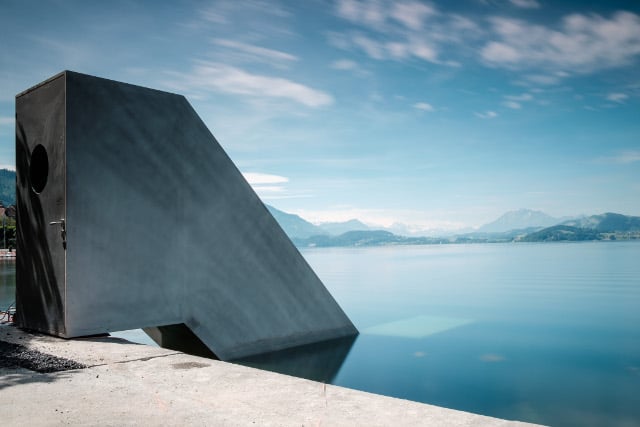 The Roman Signer sculpture, Kunsthaus Zug. Photo: Olivier Baer, Zurich
Zug has both new and old attractions. The Old Town of the canton capital (also named Zug) is very pleasant for a stroll – don’t miss the clock tower – and once you hit the shores of Lake Zug, you’ll spot the stylish, modern Roman Signer lake view sculpture, which you can enter for a duck’s eye view of Lake Zug.
Zürich: Uetliberg
The Roman Signer sculpture, Kunsthaus Zug. Photo: Olivier Baer, Zurich
Zug has both new and old attractions. The Old Town of the canton capital (also named Zug) is very pleasant for a stroll – don’t miss the clock tower – and once you hit the shores of Lake Zug, you’ll spot the stylish, modern Roman Signer lake view sculpture, which you can enter for a duck’s eye view of Lake Zug.
Zürich: Uetliberg
 The view from Zurich's Uetliberg. Photo: Christof Sonderegger/Swiss Tourism
Zurich’s ‘home mountain’ provides panoramic views across Switzerland’s largest city and its lake, all the way to the Alps in the distance on a clear day.
Plan B: Swimming in Zurich
If the weather allows, go jump in the lake! There’s hundreds of spots to swim in the fresh, clear waters of Lake Zurich and its fast-flowing offshoot, the Limmat River.
A version of this article by Claire Doble first appeared in The Local in 2017. Read about her Swiss travel adventures on her blog.
The view from Zurich's Uetliberg. Photo: Christof Sonderegger/Swiss Tourism
Zurich’s ‘home mountain’ provides panoramic views across Switzerland’s largest city and its lake, all the way to the Alps in the distance on a clear day.
Plan B: Swimming in Zurich
If the weather allows, go jump in the lake! There’s hundreds of spots to swim in the fresh, clear waters of Lake Zurich and its fast-flowing offshoot, the Limmat River.
A version of this article by Claire Doble first appeared in The Local in 2017. Read about her Swiss travel adventures on her blog.
Comments (1)
See Also
Aargau: Lenzberg Castle
.jpg)
Lenzburg Castle. File photo: Depositphotos
With a history dating back a thousand years, Aargau’s Lenzberg Castle is well worth a visit. Also known as the Dragon Castle, this 'Schloss' comes complete with its own dragon’s lair, a drawbridge, a knight’s hall and picnic-worthy gardens. A great day-trip, with a fantastic kids’ playroom where you can dress up as knights, ladies and dragons too, of course!
Appenzell Ausserrhoden: Säntis
.jpg)
Idyllic Apenzell with the Säntis in the background. Image: Depositphotos
The small half-cantons of Appenzell Ausserrhoden (traditionally Catholic) and Innerrhoden (traditionally Protestant) make up the picturesque region of Appenzellerland.
When visiting Ausserrhoden, you can’t go past (literally) its resident mountain, Säntis. An impressive peak reaching to 2,501m, Santis is the tallest mountain in the Alpstein massif. Catch a cable car (or hike) to the top and gaze out over neighbouring cantons Appenzell Innerrhoden and St Gallen or over Lake Constance.
.jpg)
Boys from Appenzell in traditional costumes. Photo: AFP
It is said that on a clear day that you can see six countries from the top of the Säntis: Switzerland, Germany, Austria, France, Lichtenstein and Italy.
Plan B: Appenzell cheese factory
Sample one of Appenzellerland’s most famous local products with a trip to the Appenzell cheese factory and museum.
Appenzell Innerrhoden: Berggasthaus Aescher

Photo: Aescher Alpstein
An Instagram staple, Berggasthaus Aescher gives new meaning to the term “destination restaurant” – even when that is not always positive news.
Located a cable-car ride and short hike from Wasserauen, Aescher is built right into the cliff face and clings dazzlingly to the side of the Ebenalp mountain (if you go inside, you’ll see the back wall of the hotel is actually living rock). It's open May to November.
Basel-Landschaft: Augusta Rurica

Photo: Suzanne Schenker
Soak up some of this canton’s ancient Roman history at Augusta Rurica, Switzerland’s largest archaeological park. The ruins from some of the earliest Roman settlements along the Rhine river include an amphitheatre, a castle and aqueduct. There’s also a museum containing the treasure of Kaiseraugst, one of the largest hoards of Roman silver ever discovered.
Basel-Stadt: Fondation Beyeler

Photo: Stephan Schacher/Fondation Beyeler
Switzerland’s self-styled capital of culture hosts the famous international art fair Art Basel annually in June. However, if you can’t be there for those four days, do not despair! The city offers a wealth of high-profile art year-round.
Check out Fondation Beyeler, with its impressive exhibition schedule of classic modern and contemporary artists, and the permanent collection including Monet, Kandinsky, Picasso, Warhol, Matisse and Rothko. This year's summer exhibition is given over to contemporary painter Rudolf Stingel including works that has never before been shown.
Bern: the Old Town
.jpg)
Bern's historic old town. File photo: Depositphotos
The Swiss capital city’s Old Town (Altstadt) was declared a Unesco World Heritage site in 1983 and it’s easy to see why. The charming medieval streets and well-preserved renaissance buildings are dramatically situated on and above the steep banks of the River Aare, which is where the city's residents go to cool off on hot summer afternoons.
Plan B: The Bernese Oberland
It's less of a plan B and more of a must-do-as-well. The countryside around Bern has some world-class scenery. Check out the pretty, car-free town of Wengen with views to the 'big three' mountains: Eiger, Mönch and Jungfrau or swim in the turquoise waters of Lake Thun and Lake Brienz.
Fribourg: Gruyères

The fantastical bar at the Giger Museum. Photo: HR Giger Museum
The historic walled town of Gruyères offers many delights, from its famous cheese (honoured in the Maison du Gruyère where you can see it being made) to visiting the museum devoted to Swiss artist HR Giger.
This museum is home to the largest collection of the Alien designer’s dark, organic sci-fi sculptures, paintings, furniture and film designs.
Plan B: Frog Museum
Another medieval town in canton Fribourg contains possibly the strangest museum in Switzerland. The Frog Museum in Estavayer-le-Lac features 108 stuffed frogs arranged in scenes from everyday life in the mid-19th century, thought to have been the taxidermy project of a former Swiss Guard.
Geneva: the Jet d’Eau
.jpg)
Photo: Olivier Miche/Geneva Tourism
You can’t visit Geneva without checking out the Jet d’Eau waterspout. Built in 1886 to regulate the water pressure, it’s one of the world’s tallest fountains, reaching 140m at its highest spray. It spurts into Geneva harbour in front of Quai Gustave-Ador but you’ll get the best pics from the other side, near the Bains des Pâquis.
Plan B: CERN
Science buffs won’t want to miss checking out the famous European Organization for Nuclear Research (CERN) while in Geneva. If you want to do a guided tour, book early as the English-language ones are highly sought-after.
Glarus: Klontalersee

Photo: Bob Ryskamp
Nice things come in small packages. Switzerland’s smallest canton offers the gem of the Klontalersee – a pretty mountain lake with amazing reflections. Walk around the shores, taking snaps, or take a boat tour. You can even swim here in summer, when the water temperature reaches around 20C.
Graubünden: Swiss National Park
Photo: Caroline Bishop
In a country known for its natural beauty, it may surprise you to learn Switzerland only has one national park. But because it’s Switzerland, it’s a pretty spectacular one. Covering an area of 170 kilometres square in the wild and wonderful southeastern canton of Graubünden, this is a unique area of the Alps stocked full of flora and fauna.
Plan B: Soglio
The traditional alpine hamlets of Graubünden are always winning ‘most picturesque village in the world’ awards, so stop in and visit one while you’re here: try tiny Soglio (pop: 167).
Jura: St Ursanne

Photo: Ivo Scholz/Swiss Tourism
On the other side of Switzerland, Jura offers up the gorgeous town of St Ursanne on the banks of the fast-flowing river Doubs. The town revolves around its handsome Collegiate Church and former monastery and still retains a peaceful, reflective feel.
Plan B: Jurassic Jura
Those who want to put the Jurassic in Jura can explore the canton’s fantastic ‘Tracking the Giants’ dinosaur trail, where you’ll see fossil footprints and other relics of the area’s former prehistoric inhabitants.
Lucerne: Chapel Bridge

Photo: Jan Geerk/Swiss Tourism
Lucerne (Luzern in German) is a must-see on any tourist’s list. The old town is stunningly situated on the banks of Lake Lucerne, over the waters of which stands the famous Kapellbrücke – a 14th-century covered wooden bridge featuring 17th century painted scenes of local history and the city’s patron saints. It was rebuilt in 1993 after a devastating fire which destroyed many of the original paintings.
Neuchâtel: Absinthe Museum
Photo: Caroline Bishop
The wormwood-infused "green fairy" drink beloved of Toulouse-Lautrec and co. in Paris during the Belle Époque was first concocted in Neuchâtel’s Val-de-Travers in the late 1700s.
Read also: What a trip - 10 great Swiss inventions
Nowadays you can walk or cycle a 35km Absinthe Trail linking distilleries, restaurants and shops selling the stuff, and visit the fascinating Maison de l’Absinthe (Absinthe Museum) in Motiers. But be warned, you may start seeing double if you imbibe too much on the way!
Nidwalden: Stanserhorn’s open-air cable car

Photo: Christian Perret/Swiss Tourism
Switzerland has some excellent cable cars, funiculars and cog-wheel railways with almost-unfailingly jaw-dropping ascents and nerve-inducing views. However, Nidwalden’s Stanserhorn CabriO has a little extra claim to fame – it’s the world’s first open-top, double-decker cable car (not for the faint of heart).
Enjoy brilliant 360 degree views from the top deck as you travel up the Stanserhorn mountain, plus the added thrill of feeling the wind in your hair.
Obwalden: Pilatus

Photo: Andreas Gerth/Swiss Tourism
Another record-breaking mountain ride is located in Obwalden. The astounding feat of engineering that is the Pilatusbahn winds its way up the side of Mount Pilatus and is the world’s steepest cog railway. Once you’re at the 2,132m station of Pilatus Kulm, you’ll enjoy wonderful views over Lake Lucerne and beyond.
Schaffhausen: Rheinfalls

Photo: Christof Sonderegger/Swiss Tourism
Getting sick of huge mountains and picturesque towns? In Schaffhausen the main attraction is the impressive Rheinfalls. Europe’s answer to Niagara, the sheer volume of Rhine River water pounding over these waterfalls is a sight to see – especially in spring and early summer as the mountain snow melts away.
Plan B: Stein Am Rhein
Just in case you were after another lovely town – Stein Am Rhein is a beautiful example, full of half-timbered, brightly painted medieval buildings.
Schwyz: Einsiedeln Abbey

Photo: Christof Sonderegger/Swiss Tourism
The town of Einsiedeln in the canton of Schwyz is watched over by the large, baroque-style Einsiedeln Abbey and church.
This still-active Benedictine monastery was first established around 1,000 years ago and has been a popular resting spot on the 'Way of St James' pilgrimage route for much of that time. Lovely at any time of year, the Abbey is especially magical at Christmas when there’s a large market chock full of food, gifts and Glühwein (or mulled wine).
Solothurn: Solothurn old town

Photo: Claire Doble
Solothurn, something of a cultural hub with its literature and film festivals, is billed as Switzerland’s finest baroque town. The capital of the canton of the same name, the town centre is a beautifully maintained time capsule from the 17th century.
Take a tour to discover how Solothurn is centred around the mystical number 11, with 11 fountains, 11 abbeys and churches, and even a clock face with just 11 numbers on it.
St. Gallen: Stiftsbibliothek Library

Photo: Christof Schuerpf/Swiss Tourism
The entire St Gallen Abbey precinct is Unesco-listed, but the medieval jewel in the crown is the Abbey’s Stiftsbibliothek (library). This opulent wood-panelled space is one of the oldest libraries in the world still in operation. It contains a treasure trove of rare and ancient manuscripts including some of Charlemagne’s correspondence and priceless illuminated manuscripts dating from the early middle ages onward.
Plan B: Mogelsberg treetop walk
This beautiful new walkway not far from the city of St Gallen rises up to 50 metres off the forest floor and allows people to experience the flora and fauna in a whole new way. Pram-friendly, it offers views over the Necker Valley and even as far off as the dramatic Churfirsten mountain range and the Appenzellerland region.
Read also: In pics - Switzerland's 11 stunning Unesco World Heritage sites
Thurgau: Sugar Mill tour
Sugar is big business in Switzerland and, given the amount of chocolate produced and consumed here, that probably won’t shock you. In the largely agricultural canton of Thurgau (it is famous for its apples and apple cider), you can get stuck into the nitty gritty of Swiss sugar production by taking a tour of one of the country’s main sugar mills in the cantonal capital city, Frauenfeld.
Plan B: The Hüttwilersee
This small tranquil lake is a hidden gem for hiking around or even diving into during the warmer months.
Ticino: Bellinzona’s castles

Photo: Roland Gerth/Swiss Tourism
If you want sunshine, Switzerland's Italian-speaking canton of Ticino is a good bet. And a good place to start is the town of Bellinzona which is home to not one but three atmospheric ruined castles. These are Unesco-listed and offer a fine day’s exploration as well as some stunning views from the ancient ramparts.
Plan B: Lavertezzo bridge
The Lavertezzo bridge in Ticino’s stunning Verzasca Valley is a medieval, double-curved bridge that arcs over the pristine bottle-green water of the Verzasca river and is another postcard-perfect spot.
Uri: Rütli meadow

Photo: Fabrice Coffrini/AFP
Uri is famous for not one but two Swiss 'origin stories'. It is where the arguably mythical character of William Tell lived and shot the arrow off his son’s head (there’s a bronze statue of him in Altdorf), and it’s also where you’ll find the Rütli meadow, where the oath of the Swiss Confederation was first sworn back in 1291 – at least according to the popular version.
A visit to Rütli is something akin to visiting the UK’s Runnymede or Independence Hall in the US. The spectacular boat ride across Lake Lucerne to the meadow is an experience in itself.
Valais: The Matterhorn

Photo: Toni Mohr/Swiss Tourism
It’s all about altitude in Valais. The canton is home to the stunning, instantly recognizable Matterhorn mountain, as well as around 45 other peaks that rise over 4,000 metres above sea level including Switzerland’s highest, Dufourspitze at 4,634m.
Vaud: Vevey

The elegant town of Vevey is very much on the international travel radar in 2019 with both Lonely Planet and National Geographic putting on its 'must-see' lists for this year.
The reason is the upcoming Fête des Vignerons (Winegrowers' Festival), which runs from July 18th to August 11th.
This Unesco-recognised event is Switzerland's oldest and largest wine festival and – to make it even more special – it is held a maximum of five times every century.
Last staged in 1999, the Fête des Vignerons has its origins in the 17th century when the Wine Guild held a yearly pageant in Vevey, which is located at the foot of one of Switzerland's oldest wine-growing regions, the Lavaux.
Zug: Zug Town centre and lake

The Roman Signer sculpture, Kunsthaus Zug. Photo: Olivier Baer, Zurich
Zug has both new and old attractions. The Old Town of the canton capital (also named Zug) is very pleasant for a stroll – don’t miss the clock tower – and once you hit the shores of Lake Zug, you’ll spot the stylish, modern Roman Signer lake view sculpture, which you can enter for a duck’s eye view of Lake Zug.
Zürich: Uetliberg

The view from Zurich's Uetliberg. Photo: Christof Sonderegger/Swiss Tourism
Zurich’s ‘home mountain’ provides panoramic views across Switzerland’s largest city and its lake, all the way to the Alps in the distance on a clear day.
Plan B: Swimming in Zurich
If the weather allows, go jump in the lake! There’s hundreds of spots to swim in the fresh, clear waters of Lake Zurich and its fast-flowing offshoot, the Limmat River.
A version of this article by Claire Doble first appeared in The Local in 2017. Read about her Swiss travel adventures on her blog.
Join the conversation in our comments section below. Share your own views and experience and if you have a question or suggestion for our journalists then email us at [email protected].
Please keep comments civil, constructive and on topic – and make sure to read our terms of use before getting involved.
Please log in here to leave a comment.